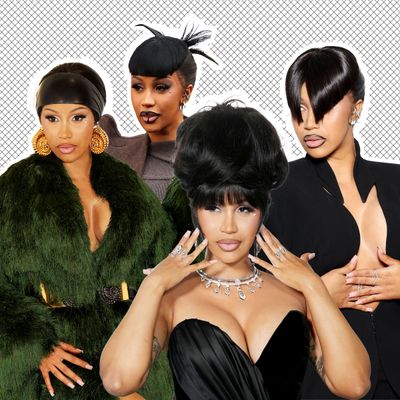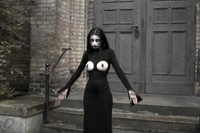
What does the modern goth look like?
Evolving from the traditional goth aesthetic of the 80s, goths today are becoming more extreme but also more mainstream, infiltrating the worlds of high fashion and celebrity
Once a subcultural refuge for outsiders, the last few years has seen goth beauty enter the mainstream limelight. Today, you are just as likely to see the dark and gloomy aesthetic in music videos for pop stars and campaigns for fashion brands as you are skulking outside of Soho nightclubs. With the release of Netflix’s Wednesday and the rise of the vampy succubus chic, goths haven’t had this much mainstream attention since Evanescence was playing through the speakers of Hot Topic.
The look is even being adopted by celebrities like Amelia Grey and Alexa Demie. The it-girl of today is “about being really hot, in like a scary way,” as Gabbriette explains in Charli XCX’s recent “360” video. Last month, in a collaboration with e.l.f. upon the release of their corpse paint collection with Liquid Death, Julia Fox painted her face pale with her eyeliner wings extending into her hair – just a simple look to walk her Saint Bernard in.
The goth subculture emerged in the 1970s, birthed by fans of gothic rock bands like Bauhaus, The Cure and Siouxsie and the Banshees. They quickly developed a distinctive style – morbid but romantic – with black dominating their fashion and beauty. “Back in the late 70s or 80s, when goth as a movement started, it was an emergence of a subculture that was unmistakably recognisable through their make-up,” says DJ and goth performance artist Dahc Dermur VII.
In the US, traditional goths wore bell-sleeved Victorian shirts and poofy collars, recalls Lamar M. Lamar who was a teenage goth in the 80s. Make-up was pale with dark eyeliner. “Boys were super skinny with tight black fishnet tops, black pants and boots,” he says. As a goth of colour, Lamar deviated from traditional understandings of what goth means – for him it’s about “negro gothic”, the aestheticisation of a certain trauma of belonging to the African diaspora. “I was very depressed in junior high,” he says. “Listening to ‘In my Solitude’ by Billie Holiday was to me, my first negro gothic moment.”
Since then, the goth subculture has evolved and morphed, from the darkwave of the 80s to the mall goths who haunted Hot Topic in the early 2000s. Moving away from its original counter-cultural roots, which were so closely linked to music fandoms and a nihilist rejection of the mainstream, goth has become more purely aesthetic. “Goth looks today range from heavy eyeliner to completely out there designs inspired by Club Kid looks from the 90s,” says Ally McGillicuddy, the make-up artist for the e.l.f. x Liquid Death commercial. The fashion designer Ilona, often seen as a bewitched fashion doll haunting Paris, mostly ventures out in corpse paint. While AphroDaveth, who calls himself ‘The Sleeping Beauty Paralysis’, says there are more extreme looks in goth now – something he is proof of, with his white-painted face and bloody mouth perennially open in a silent scream.
“Now creators are looking to individualise and push the limits with their make-up,” says drag artist Gottmik. “One minute I’ll be doing a goth Kiss-inspired look, then I’ll do a full 80s punk rock grunge inspired look, and then want to look like a 90s supermodel, keeping my goth undertones.” Gottmik’s stamped white face elevated to glam goth is frequently seen on campaigns for Versace, Jean Paul Gautier or on the runway for Boss. “I think there will always be the classic ‘goth’ make-up that is more of a white face with heavy black liner that is very 80s grunge,” he says. “But now it has grown to a super editorial edgy place that allows anyone to dabble in it.”
One of the people bringing a goth sensibility into fashion is stylist Kurt Johnson, whose work highlights the BDSM aspect of the subculture. “There’s always a very horny sexual undertone to what I do,” he says. “The generation of goth that I’m part of – we’re referencing the originals but putting our own spin on it.” He takes famous fantasy characters and turns them into depraved sexual figures, often in full goth glam or transform them into otherworldly figures using prosthetics. “Like Lord Voldemort or the Chatterer from Hellraiser and transform them into horny, goth, freakish gay smut scenes,” he said, “I want my work to take people back to a time or into a universe that’s not necessarily Earth.”
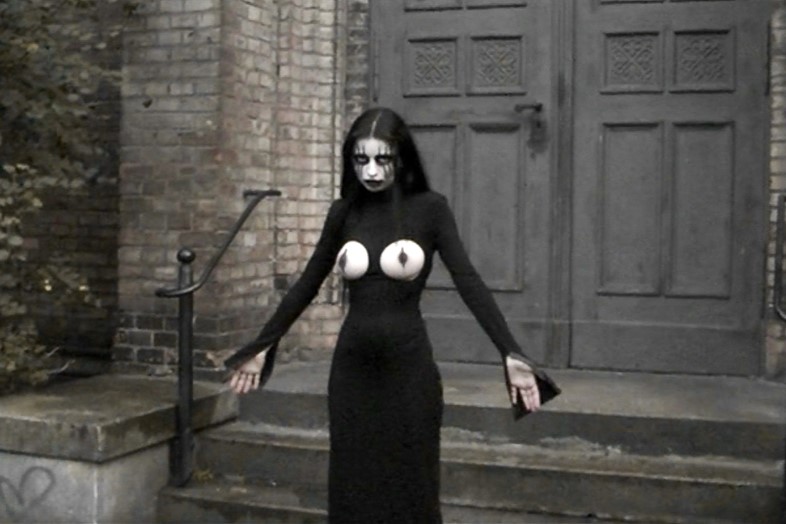
While goth looks have become high fashion with Dahc Demur VIII modelling for Burberry and Fecal Matter walking for Rick Owens, it hasn’t been a straightforward journey for the industry to accept their point of view. Steven Raj Bhaskaran and Hannah Rose Dalton of the fashion duo behind Fecal Matter, says there was a time when editors and stylists thought they would never be a good fit for their audience. “The landscape has changed,” says Bhaskaran. “It has adopted perhaps a lot of the values we and our peers have.”
Johnson believes this recent popularity and acceptance of the goth look has come about thanks to figures like Playboy Carti, Ken Carson and other performers at ‘Opium’ adopting the subculture, which has led to a younger generation trying them on TikTok, and brands have followed. Lamar also points out that there’s a new generation of Black male rappers like YK Osiris, Lil Uzi Vert and Young Thug who are embodying goth. “We have this whole new generation of Black people who are aesthetically identifying with goth,” he says. “So youth culture in terms of goth is really emerging from hip hop – gender ambiguity in goth is leaking into Black culture.”
Social media has played a big role in broadening tastes and allowing people to be who they are, says McGillicuddy. “Back in the day we had few places to shop,” she says. “So most people ended up looking alike.” More exposure on the internet has led to people adopting the aesthetic, agrees make-up artist Lochie Stonehouse, who has worked with artists like Ethel Cain and Billie Eilish, and brands follow, which creates a trend. Plus, with all the horror happening in the world right now, is it any wonder that people are feeling morose and taking solace in the morbid? The post-pandemic and late capitalist world is a distorted, apocalyptic reality, says Lamar, which is very goth. “Disappearance of bodies into our phone – a lot of our post-pandemic life is online,” he reflects. “I might have Zoom meetings with people who’re all in New York. It creates more alienation in the Marxist sense, which creates despair. There are a lot of catastrophic things happening around us and one’s aesthetic has to reflect that.”
newslinker
Related Posts
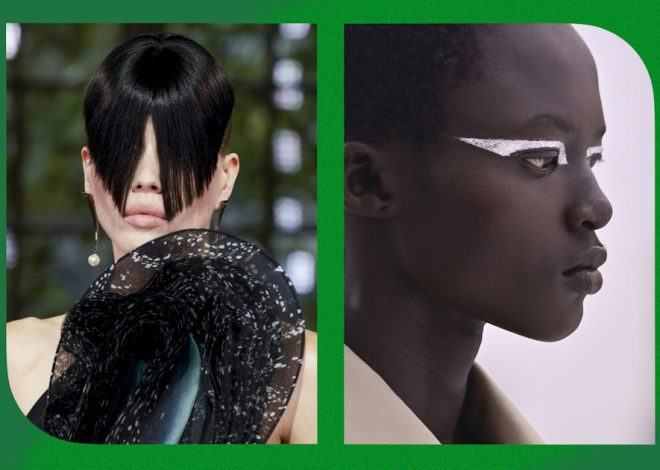
Reverse Cutout Bangs, Silver Cat Eyes, & More Top Paris Fashion Week Beauty Moments
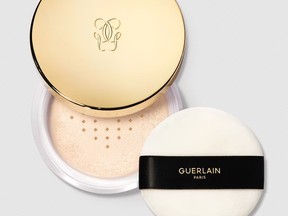
Beauty buzz: Guerlain Parure Gold Skin Diamond Micro-Powder, Olaplex No. 0 Intensive Bond Building Hair Treatment, and Functionalab Perfect Glow Protective Skin Tint Serum
